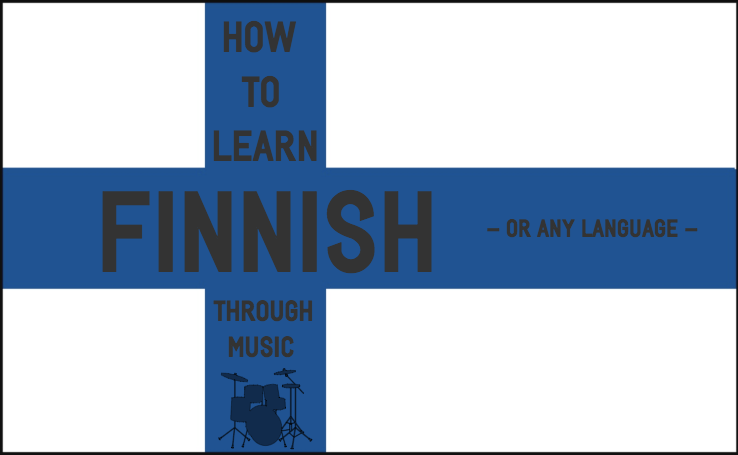How To Learn Finnish – Or Any Language – Through Music
Table of Contents
‘Pelasta mut!!!’ sings Aki Tykki of Happoradio, fixing you with a steely stare from beneath his pipo – cap, to you and me. This is the beautiful song Pelastaja which translates as ‘Saviour’, and this man, without a doubt, can save me, anytime.
I digress.
When I first decided to learn Finnish, because, hey, that’s a normal language to try to learn in your own time, I did the usual. You know:
1) Look up ‘essential phrases’:
Missä on lähin sauna? – Where’s the nearest sauna?
Ota minutjäähalli! – Take me to the ice rink!
Tarvitsen salmiakki. – I need salmiakki.
2) Learn regular verb conjugation:
‘To be’: olen, olet, on, olemme, olette, ovat (thank you, Verbix)
3) Practice, practice and practice!
Now as fun and rewarding as this somewhat traditional route can be, there’s only so much I can take before the conventional bores me, and so I thought, what about music?
I’m a huge fan of Finnish music. Happoradio, Apulanta, Children of Bodom. Why not, I said to myself, try to understand the lyrics? At which point I started sympathising with any student taking a listening exam in a foreign language. It is hard work. Your forehead will furrow and unfurrow in misunderstanding and dissecting. But, I genuinely mean it when I say, it is one of the most helpful ways of picking up a language. I promise. Bear with me whilst I argue my case:
- It’ll allow you to learn true native pronunciation without the fear of speaking to a true native before you’re ready.
- It’ll provide you with colloquialisms that make so much more sense than textbook language.
- It’ll give you the chance to learn without… you know, ‘learning’.
So, here’s our step-by-step guide to learning Finnish – or any language for that matter – with music:
1. Pick a song. Makes sense, no? Pick one you like. That’s even better.
2. Listen to it. A lot. Until you find yourself mumbling the chorus at least – perhaps you’ll understand a word or two, more if you’re lucky. If not, you’ll at least pick up the melody.
3. Time for a little concentration. Listen again, and try to write down the words you can hear. Don’t worry at this stage if you can understand them or not.
4. Listen again. Fill in the gaps if you can, if not, leave spaces.
5. Try to translate what you have, either with a faithful dictionary, the questionable quality of Google Translate, or some other such sources. The internet brings languages alive: utilise it!
6. Find a lyric video on YouTube. Listen whilst reading.
7. Then, use a website like Lyric Translate, to get the full lyrics and a complete translation.
8. Learn. Sing. Repeat. Until you are singing it in your sleep.
9. Dance (optional)
So, you’ve done the conventional thing: you’ve learnt a new song, and perhaps some new dance moves. Interest piqued? Ready for more? The correct answer is, obviously, yes… languages new and unusual are fun! Add a little structure to your learning and meet some new people along the way by contacting us and finding out more about courses in your area. Go on… give it a try and get started on learning that new language today.




